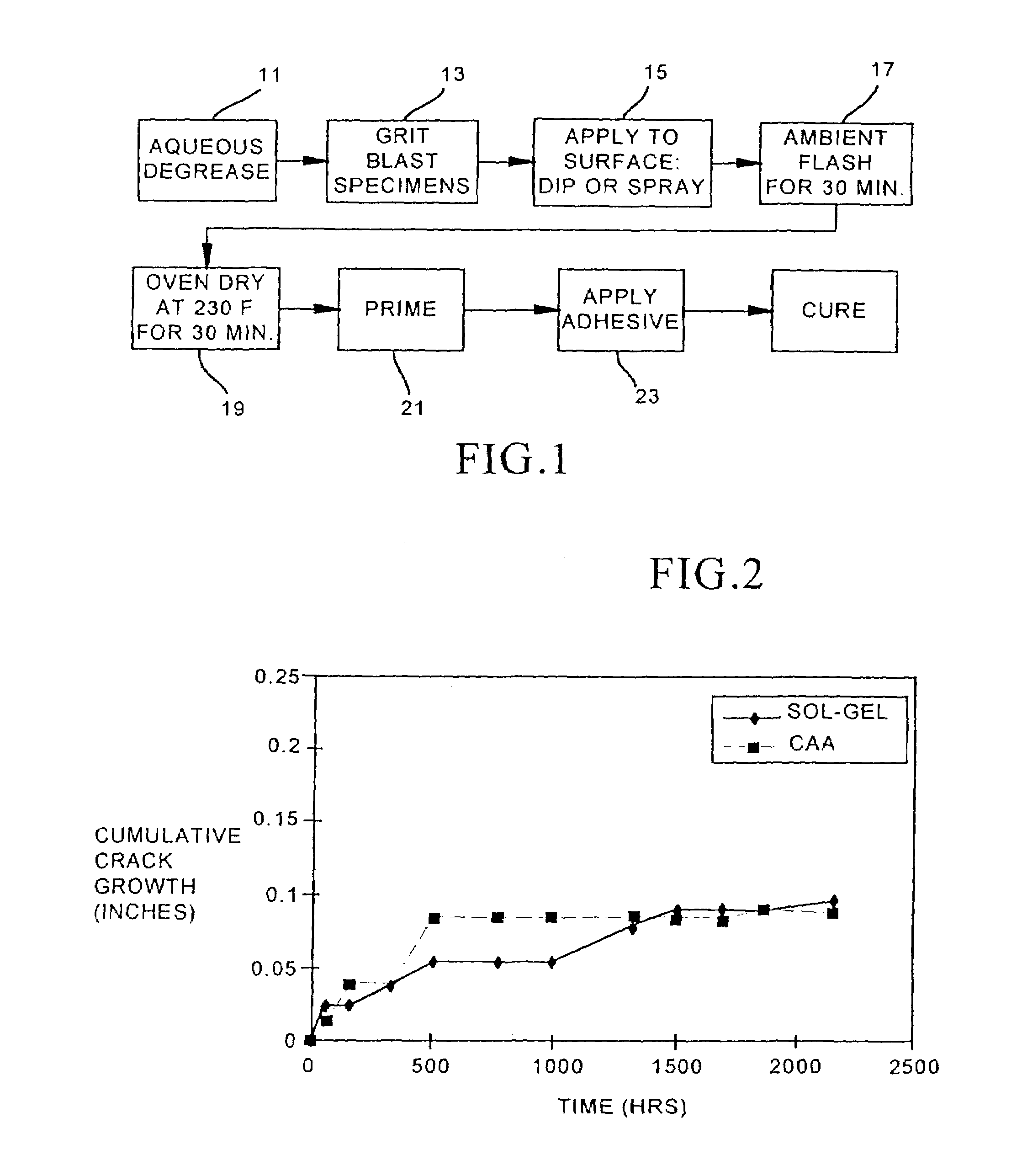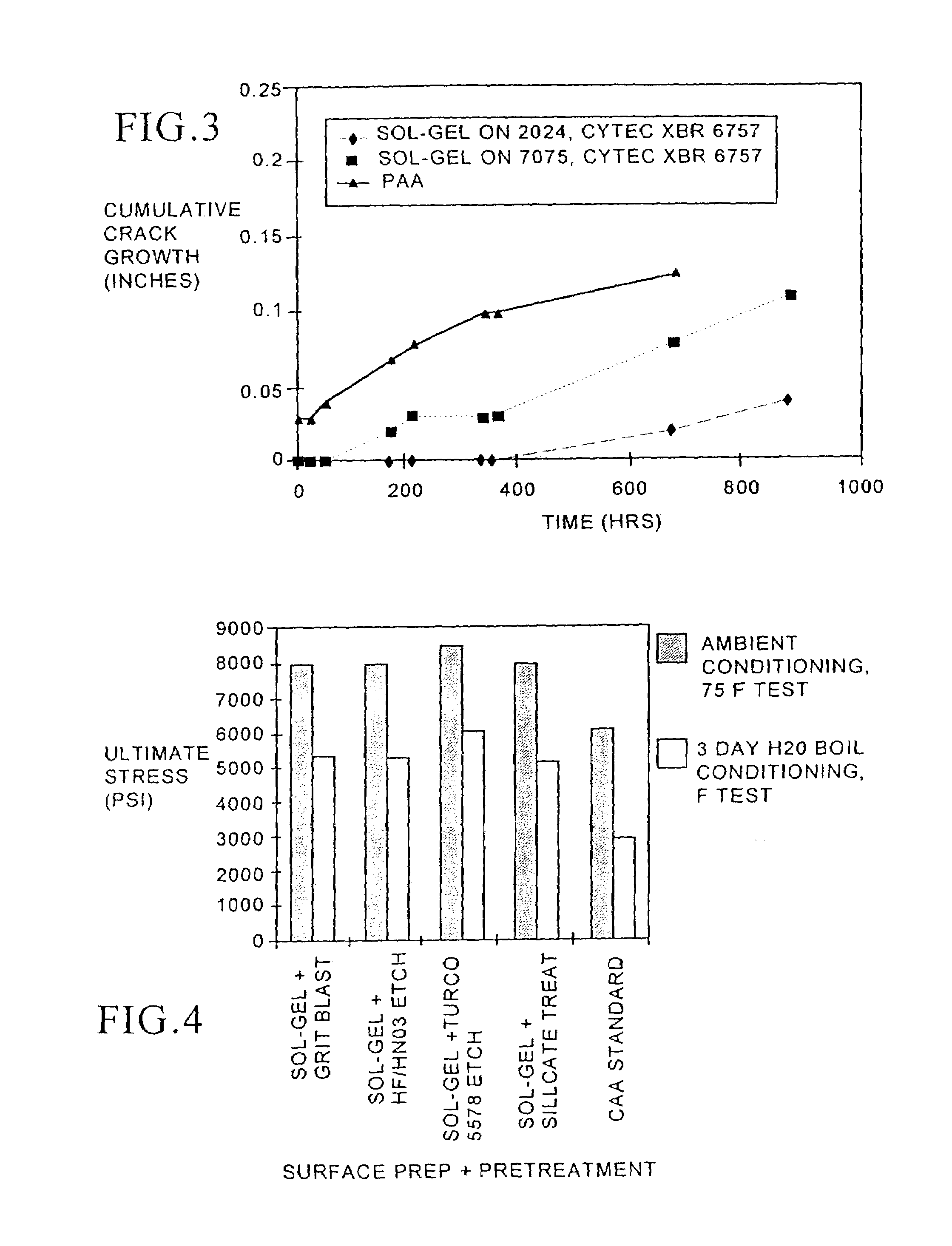Pigmented alkoxyzirconium sol
a technology of alkoxyzirconium sol and pigmented alkoxyzirconium, which is applied in the direction of adhesion processes with surface pretreatment, group 4/14 element organic compounds, textiles and paper, etc. it can solve the problems of difficult cleanup and disposal, disadvantageous surface treatment processes, and large amount of water required to remove metals, etc., to achieve the effect of strengthening bonding with overcoats
- Summary
- Abstract
- Description
- Claims
- Application Information
AI Technical Summary
Benefits of technology
Problems solved by technology
Method used
Image
Examples
Embodiment Construction
[0030]First, we will discuss some generally applicable aspects of the sol and of the sol coating. Then, we will discuss the pigmented sol that is the focus of the present invention.
[0031]Sol coating of metals achieves resin-to-substrate bonding via chemical linkages (covalent bonds, hydrogen bonds, or van der Waals forces) while minimizing environmental impacts otherwise caused by the traditional use of highly diluted hazardous metals. A preferred sol for making the sol coating (also called a sol-gel film) on a metal substrate includes an organozirconium compound (such as tetra-n-propoxyzirconium) to bond covalently to the metal through Zr and an organosilane (such as 3-glycidoxypropyltrimethoxysilane) to bond covalently to the organic primer, adhesive, or resin (with an acetic acid catalyst in water-based formulations as a catalyst for the silane and as a hydrolysis rate stabilizer for the zirconate).
[0032]In a successful surface treatment, the typical failure mod...
PUM
| Property | Measurement | Unit |
|---|---|---|
| vol% | aaaaa | aaaaa |
| temperature | aaaaa | aaaaa |
| thick | aaaaa | aaaaa |
Abstract
Description
Claims
Application Information
 Login to View More
Login to View More - R&D
- Intellectual Property
- Life Sciences
- Materials
- Tech Scout
- Unparalleled Data Quality
- Higher Quality Content
- 60% Fewer Hallucinations
Browse by: Latest US Patents, China's latest patents, Technical Efficacy Thesaurus, Application Domain, Technology Topic, Popular Technical Reports.
© 2025 PatSnap. All rights reserved.Legal|Privacy policy|Modern Slavery Act Transparency Statement|Sitemap|About US| Contact US: help@patsnap.com



